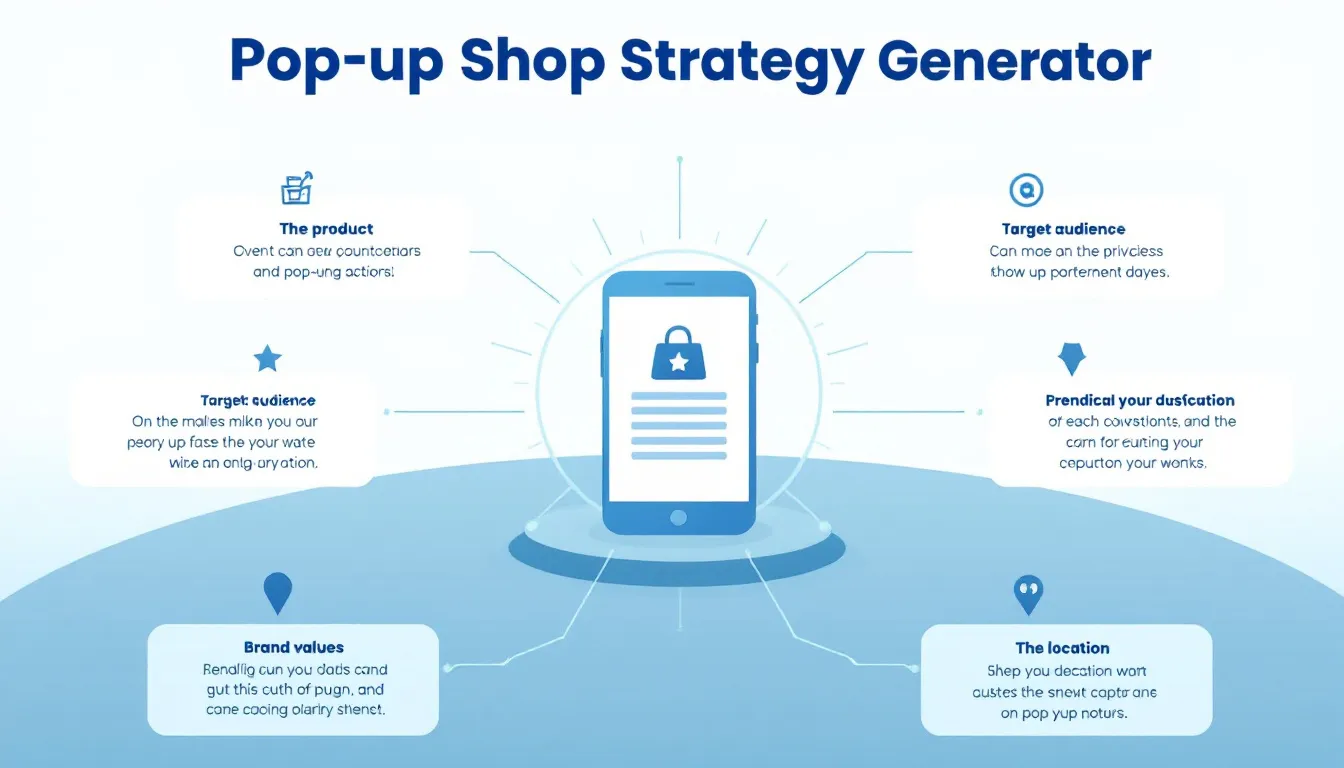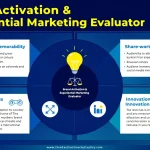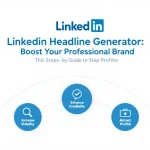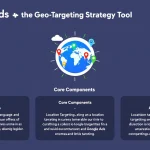Is this tool helpful?
How to Use the Pop-up Shop & Experiential Marketing Strategy Generator Effectively
This tool helps you create a clear and actionable pop-up shop marketing strategy by gathering key details about your product, audience, and goals. Follow these guidelines to enter precise and thoughtful inputs for the best results.
Input Fields Guide
-
Product or Service Being Promoted: Enter the specific product or service you want to highlight in your pop-up shop strategy. Examples include:
- “Organic handmade soaps with natural ingredients”
- “Mobile app subscription offering personalized fitness plans”
-
Target Audience Demographics: Describe the core characteristics of your ideal customers, focusing on their lifestyle, location, and preferences. For instance:
- “Young parents aged 28-40 in suburban neighborhoods, interested in sustainable living”
- “Tech-savvy college students seeking affordable meal options in urban campuses”
-
Brand Values and Unique Selling Points: Share what sets your brand apart, covering both tangible and emotional benefits. Consider these samples:
- “Locally sourced ingredients, cruelty-free production, family-owned business”
- “Cutting-edge technology, convenience, user-friendly design with excellent customer support”
-
Preferred Pop-up Locations: Specify venues or neighborhoods that align with your target audience and brand identity. For example:
- “Downtown farmers markets, community art fairs”
- “Coworking spaces, tech parks, boutique shopping districts”
-
Marketing Budget (USD): Enter your estimated budget for the pop-up campaign, considering all related expenses such as venue costs and promotional materials. Examples include:
- “$8,000”
- “$12,500”
Overview of the Pop-up Shop & Experiential Marketing Strategy Generator
This tool helps businesses develop customized marketing plans focusing on pop-up shop distribution combined with experiential marketing tactics. It generates a strategic roadmap that enhances brand exposure, targets the right audiences, and uses resources efficiently.
By integrating your input about products, target customers, brand values, and budget, the generator produces specific recommendations on where and how to set up impactful pop-up events that create meaningful customer experiences.
Key Benefits of Using This Strategy Generator
- Data-Backed Location Recommendations: Target high-potential areas where your audience naturally gathers.
- Tailored Experiential Marketing Ideas: Align pop-up features with your brand’s unique story and values.
- Optimized Budget Planning: Allocate funds smartly across venue, staffing, and promotional efforts.
- Actionable Timeline and Execution Guidance: Plan event dates and durations for maximum engagement.
- Integration of Digital and Physical Strategies: Connect your pop-up presence with social media and online campaigns.
Practical Usage and Application of This Tool
Designed as an easy-to-use online form, this generator takes your detailed inputs and sends them to an API that returns a tailored distribution strategy. Use this strategy as a foundation to:
- Identify prime locations for your pop-up shops based on audience density.
- Design engaging experiential marketing activities that reflect your brand’s unique selling points.
- Plan a realistic budget covering all essential elements like setup, staffing, and media.
- Develop timelines for preparation, launch, and follow-up.
- Define measurable success criteria and contingency plans.
Example: Specialty Tea Retailer’s Pop-up Strategy
- Product: Handmade herbal teas with organic certification
- Audience: Wellness-focused adults aged 30-50 in urban environments
- Brand Values: Health benefits, sustainable packaging, community engagement
- Preferred Locations: Yoga studios, health food stores, farmer’s markets
- Budget: $7,500
The generated strategy suggests hosting weekend pop-ups at high-traffic wellness events, offering tea tastings and interactive workshops. It also recommends leveraging social media challenges to boost foot traffic and incorporates local influencer partnerships for wider reach.
Frequently Asked Questions About the Pop-up Shop Strategy Generator
How far in advance should I plan my pop-up shop events?
Plan at least 3 to 6 months ahead to secure venues, organize marketing materials, and coordinate with partners.
Can the generated strategy be adjusted after I receive it?
Yes, the output serves as a solid starting point. You can customize it based on evolving business needs or market changes.
Which types of businesses benefit most from this tool?
Businesses selling products or services that gain from direct customer interaction, brand awareness, or market testing will find this useful.
How does experiential marketing integrate with pop-up shops?
The strategy integrates hands-on experiences like demos, workshops, and interactive displays to create lasting brand impressions during pop-up events.
What metrics should I track to evaluate success?
Track foot traffic, sales conversions, social media engagement, email subscriptions, and customer satisfaction feedback.
Does the tool factor in seasonal considerations?
Yes, it recommends timing and location strategies that align with seasonal traffic patterns and consumer behavior.
Can I generate strategies for multiple product lines?
You can input details for specific collections or entire product lines to receive tailored recommendations, including ways to cross-promote complementary items.
What role does digital marketing play in the generated strategy?
Digital components include social media engagement points, online booking options, and virtual experiences designed to amplify the pop-up shop’s impact.
Important Disclaimer
The calculations, results, and content provided by our tools are not guaranteed to be accurate, complete, or reliable. Users are responsible for verifying and interpreting the results. Our content and tools may contain errors, biases, or inconsistencies. Do not enter personal data, sensitive information, or personally identifiable information in our web forms or tools. Such data entry violates our terms of service and may result in unauthorized disclosure to third parties. We reserve the right to save inputs and outputs from our tools for the purposes of error debugging, bias identification, and performance improvement. External companies providing AI models used in our tools may also save and process data in accordance with their own policies. By using our tools, you consent to this data collection and processing. We reserve the right to limit the usage of our tools based on current usability factors.







